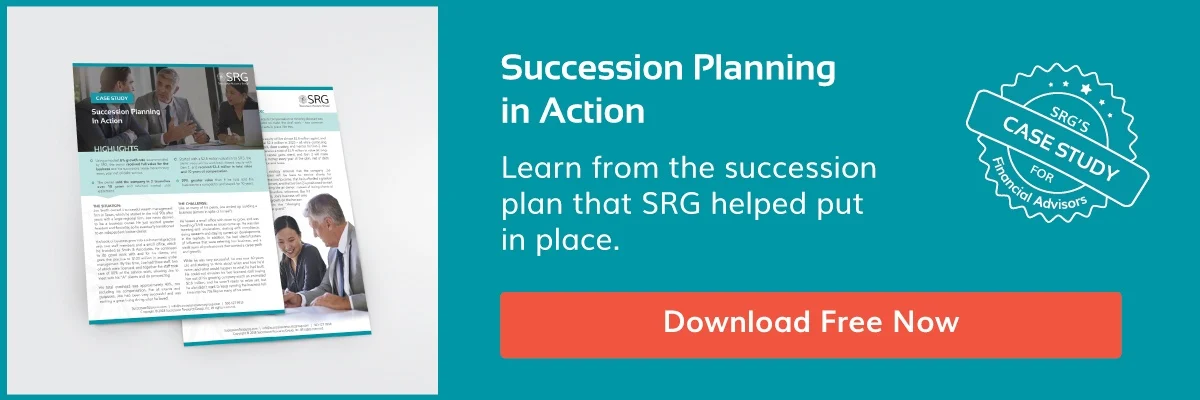Every business and client base is unique. But, there are some common core elements for advisors to consider if they want to begin developing a succession plan or internal ownership track for the next generation. We have seen and developed a wide variety of plans for our clients and know it’s easy to get bogged down in the details or let these types of plans become overly complex and “die on the vine.” Our recommendation? Start planning sooner rather than later, and keep it simple.
Here are some simple steps used by an advisor based in the Midwest with approximately $850,000 in annual production, who at the age of 55, has no intention of retiring in the next decade but wanted to build a path to ownership for his top performers:
- Formalized the business structure. Setup an S-Corporation (she had previously been operating as a sole proprietor) and began running all revenue and expenses through it.
- Had the business valued, plans to continue tracking business value annually.
- Worked on “cleaning up” company’s financial statements (eliminating some of the owner discretionary expenses present in most small businesses).
- Created a death/disability plan with the two junior advisors, just in case.
- Focused on training, mentoring and increasing the junior advisor’s amount of client face-time.
- Aligned goals to build a more team-based/institutionalized atmosphere versus a silo’ed organization.
- Set an obtainable threshold for participating in the ownership structure. Once requirements were met, advisors would have an opportunity to buy into the company, gradually transferring ownership from older to younger partners. The company agreed to help finance the purchase on very flexible promissory notes.
- Once junior advisors become partners, they began meeting quarterly to review company performance and set goals.
These simple steps had a dramatic impact on the team. Even with a small ownership position initially, the next-gen advisors began to slowly change their approach to the business, thinking and acting like owners.
So, why take the time and effort to build a succession plan if you are not ready to retire? Here are 6 reasons to start developing your succession plan today:
- Protect your business in case of death/disability of any one individual.
- Sustain more growth for longer — junior advisors that become partners think and act differently than employees, and with the right team you will grow faster with more partners helping pull the proverbial “wagon” up the hill.
- Be able to serve clients for multiple generations — clients will begin to explore their options if you are still the only owner of your firm at age 65.
- Keep and attract top talent.
- Be able to eventually take time away from your business, but know the clients will continue to be served.
- Take money out of your business more tax efficiently.
Succession planning is a process, and doesn’t have to be about your retirement. Used correctly, a succession plan is a powerful tool for growing a business. Regardless of what your long-term exit plans might be, the aforementioned steps will help you achieve maximum value for your life’s work and know that when you are ready to start slowing down, your business will continue to thrive.
Explore more on Succession Planning.



